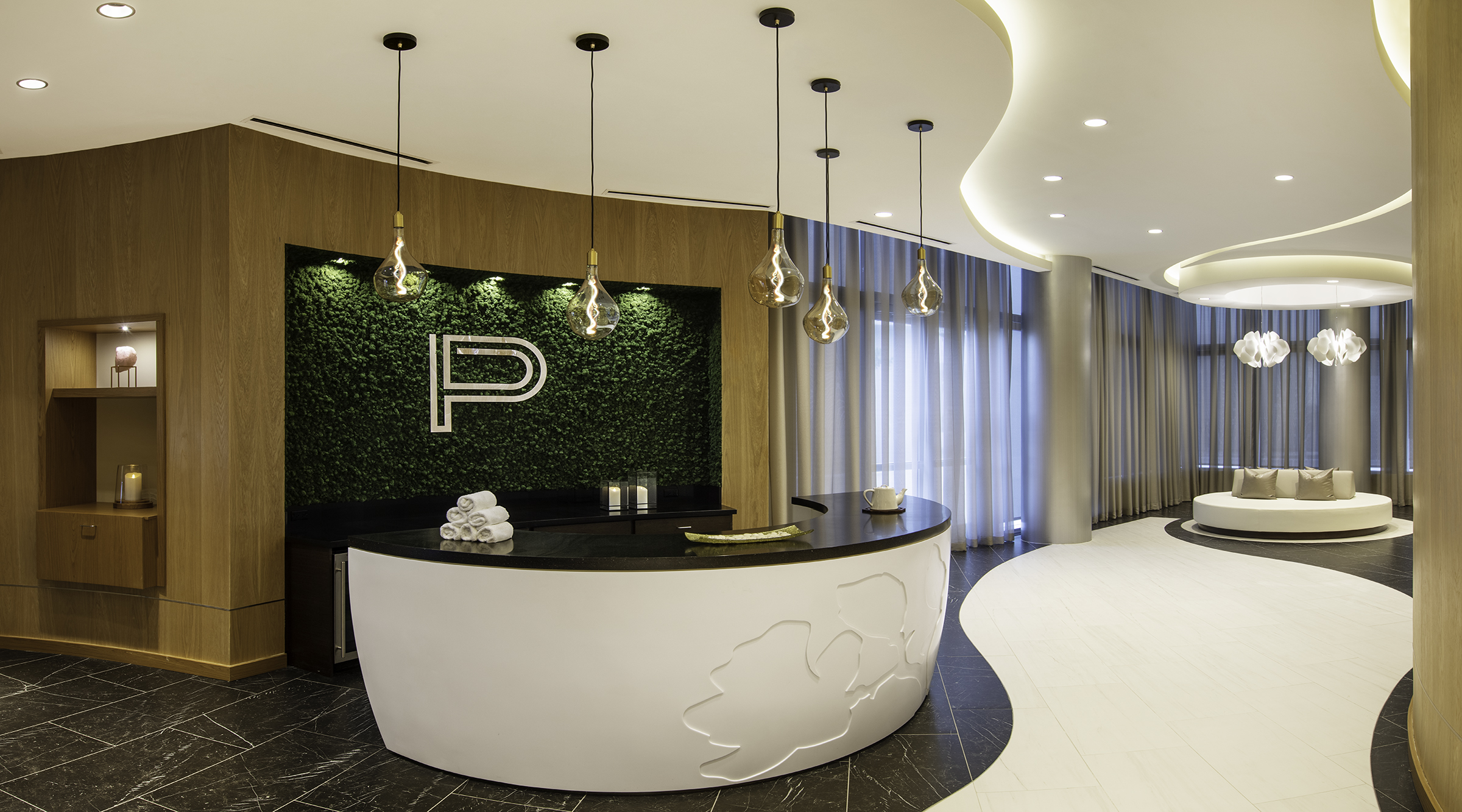
Hospitality’s Resurgence Rooted in Wellness
The global pandemic shifted our attention toward the importance of mental and physical health. In late 2020, Cleveland Clinic observed that two-thirds of the population made a positive lifestyle change, such as healthier eating habits or more frequent exercise. Two years later, consumers continue to prioritize their health, and the most innovative hotels bring an elevated wellness experience to guests. Wellness travel’s valuation will reach more than $1 trillion by 2030, but as the market gets crowded, luxury hospitality brands are looking for ways to stand out from their competition.
Introducing the Future of Wellness Experiences
Today’s luxury travelers expect more than spas, fitness centers and salons. Now, wellness is being incorporated into the DNA of high-end hotels, where every aspect of the experience improves guests’ health and well-being.
Royal Palm Companies’ Legacy Hotel & Residences will be home to the first-ever Blue Zones flagship, an expansive wellness center offering research-backed services that increase longevity and happiness. Blue Zones principles are informed by the world’s longest-lived populations, groups that prioritize natural movement, plant-slant diets, strong relationships and a sense of purpose. Whereas the average U.S. life expectancy is 78 years, living to over 100 is not uncommon in Blue Zones communities. Beyond the flagship, Legacy Hotel & Residences will integrate Blue Zones into every aspect of the guest and resident experience, offering non-alcoholic beverage menus, circadian lighting, “stand-up” reminders, oxygen-producing green walls and more.
Meanwhile, the Four Seasons’ Sensei Lanai allows guests to choose personalized wellness programs that build healthier living habits long after the trip. Its Optimal Wellbeing Program is a five-day experience that begins with translating WHOOP fitness, sleep and recovery data to create a tailored program that targets guests’ wellness goals. Before departing, the Sensei Guide will provide a “Guide to Growth” that helps guests incorporate new lifestyle changes into real life. For a more restorative program, travelers can opt into Sensei Lanai’s Sabbatical Experience, a month-long reset that blends yoga, mindfulness, island hikes and enriching lectures that build mental clarity.
Bringing Wellness to Urban Destinations
There has been a shift from how consumers wellness travel was formally synonymous with unwinding in nature or a spa, wellness experiences are now moving into the world’s top urban destinations. This year’s Global Wellness trend is “Urban Bathhouses and Wellness Playgrounds,” exploring how cities are revitalizing to promote a healthier lifestyle.
For example, Water Street Tampa was the first neighborhood to achieve WELL Design & Operations, meaning it promotes health and wellbeing for residents throughout all aspects of its design: air, water, nourishment, light, fitness, sound, mind, temperature, materials and community. The development includes wide sidewalks to encourage walking and expansive public spaces that boost connectivity. Additionally, the neighborhood offers community fitness programming in the park, water features to moderate microclimate temperatures, air-quality monitoring, water bottle refill stations, a publicly accessible wellness center and so much more.
Beyond community spaces, the world’s top hospitality brands are also bringing their wellness expertise to major cities. For example, the recently opened Aman New York includes a three-story spa and wellness center with an indoor pool, cryotherapy chambers and apartment-like bathhouses offering Moroccan hammam and eastern European banya treatments, outdoor hot and cold plunge pools and an extensive massage menu. Additionally, a Harvard-trained medical practice prescribes “wellness immersion programs,” while the building’s fitness center includes top-quality equipment, such as a $17,000 VacuTherm, a stair stepper meets sauna.
Planning Your Next Wellness Experience
As travelers prioritize wellness in trip planning, high-end hospitality brands will continue to adapt and expand their wellness offerings. Among stays in U.S. hotels, international guests spend 53 percent more on wellness, while domestic guests spend 178 percent more. Some travelers even have health preferences, 72 percent of Gen Z travelers say mental health is the most important, and 68 percent of all travelers say their next trip will focus on improving their mental health.
A Hotels Magazine blog post reads, “In the future, hospitals will be for ‘sick-care’ – when you are critically ill and need immediate attention – whereas hotels will be for true ‘healthcare’ – the preservation and restoration of body, mind and spirit.” As we look toward the future of travel and hospitality, our team at Relevance is excited to see how luxury hotels transform wellness amenities into immersive mental and physical experiences that we carry with us into our everyday lives.